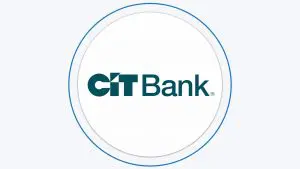Table Of Content
Wouldn’t it be nice if you could do whatever you wanted and never have to worry about money? But of course, unless you have an endless source of income that’s just not going to work, right? That’s why creating a budget is such an important part of the process.
If you just keep spending and spending with no budget to keep you grounded you’ll end up with no money left over to pay your bills.
With the 50/30/20 budgeting rule you’re going to get a bit of a jump start on that. You’re going to know just how much money you have for each of the different categories in your life.
You’re also going to base it directly on the money that comes into your home each month.
What’s even better is that it’s an easy one to master. You spend 50% of your money on things you need. 30% on things you want and 20% on yours savings and debt. But let’s take a closer look, shall we?
What Is the 50/30/20 Budget?
Let’s start with where this budget actually came from. It’s actually from Elizabeth Warren, a Harvard bankruptcy expert, and it was created to help her explain to her daughter about spending and saving. Because it breaks money into only three distinct categories she felt it would be easier for your daughter to understand. And it’s easier for all of us.
The first thing you need to do is figure out just how much you’re making in a month.
This means the amount of money that you actually bring home, not the amount that you technically earn. You need to take out the taxes, for example, and think about what amount gets deposited into your bank account.
Now, you’re going to need to make a reasonable set income every month in order to make this work. That means you need to have an amount that you can count on coming into the account so you can divide out just how much money is going to go into each area. But let’s dive into it.
How To Use The 50/30/20 Rule Budget?
The very first thing you need to do is figure out how much money you actually have for the budget. This is known as your after-tax income or your net pay. It’s the amount you bring into your household after the government gets their share.
This means after state tax, local tax, income tax, Medicare, Social Security and other expenses. Now, if you’re paying for your health insurance or any of those things from your paycheck as well you want to put that money back in your calculation. Those are expenses you would otherwise need to pay and you are paying them, so account for them later.
For those who are self-employed you want to take the gross income that you make and subtract out business expenses and whatever amount of money you put away to pay for taxes at a later time. Since you don’t pay taxes on your income as it comes in you have to pay it quarterly to the government instead.
Now, you want to take a look at the money that’s been moving around in your account over the last 12 months. You want to know how much money goes in and how much money comes out.
You want to know about anything you paid for in cash or on a card. Look at the fees you pay for your bank account and even money that you’re getting from relatives for special events and occasions. You want to know absolutely everything to get to step two. You can always get help by 50/30/20 calculator.
50% to The Things You Need
Now you want to look at the money you get in each month and divide that number in half. That number is the amount of money you should be putting toward your needs every month.
This is the bills like your rent or mortgage, your health insurance, your groceries, your transportation and your prescription costs. It’s also fixed and variable expenses that you have to pay every month, like car payments, credit card payments, child support or alimony. The key is the repercussions if you didn’t pay it.
If you’re trying to decide between whether something goes in the want category or the need category try this test. In case you don’t make that payment what’s going to happen? If something will cause you to harm or cause you to be fined or arrested then you’re looking at a need (child support, health insurance, credit card payments). If all that’s going to happen is that you’re no longer going to have that thing then you’re looking at a want (cable, going out to eat, games).
30% to The Things You Want
This is where you get to spend money on the things that you want. This is the fun money that you’ll probably have no problem spending because it’s things like that new gadget you want or a vacation or getting the best internet. These are the things that you want to spend money on and that you really enjoy using for yourself.
Now, this can be a little difficult for some people because you only get 30% of your money to spend here. If you’ve been spending without a budget then chances are you’ve been spending more than 30% up to this point and cutting back is definitely not going to be fun or easy. But it definitely can be done.
20% to The Things You Owe
Debt and savings should get a total of 20% of your take-home pay, which means multiplying the total take-home amount by 0.2.
This is things like your retirement, your emergency fund, and savings towards other financial goals and intentions – including debt reducing. This is where you’re going to get any extra money from as well. So, if you’re going to make extra payments on your debt you get it from this 20%. But make sure you’re still putting money into a retirement account and some savings accounts while you’re at it.
Pros & Cons of the 50/30/20 Budgeting
- Keep it Simple
One of the biggest benefits here is that it’s a simple process because you’re only keeping up on three categories.
You can put your money into each of those and from there you spend how you want. Unlike different budgeting methods such as the envelope budgeting – this one is very simple.
- Offer Flexibility
If you have a fixed income you can set this budget up with a set amount of money each month. If you have a little more fluctuating income you can set it up for that as well.
That’s because it’s actually percentage-based rather than being set at a dollar amount. You also get to adjust it to fit you as your own spending habits change.
- Cut Fixed Costs
When you’re looking at ways to keep your expenses within these categories and within these percentages you may actually find that you’re saving money and cutting costs in areas that you didn’t think you could. That gives you more money for other things.
- Keep it Short-Term
This is a great budget for those who are getting started because it’s so simple and it gives you a lot of freedom. It doesn’t feel as restricting.But over time it can become a little less realistic and as you start making more money it just doesn’t make sense to allocate it in the same way.
For those just getting started out, who aren’t making a lot of money, this ratio is great because you start out with some fun and still paying your expenses. As you start to make more money however, 30% of your income is definitely a luxury that you don’t even need, and it’s pretty frivolous.
Think about it this way. If you were making $80,000 a year as a net that means you would get 30% of that or $2,000 a month to spend however you want. That’s definitely going to be a whole lot of money and way more than you actually need, right? Remember, that’s not anything to do with bills or expenses.
- Tough for Hardcore Budgeting
If you don’t have a lot of money it can be even more difficult to use this budget as well. Similar to zero-sum budgeting method, when living paycheck to paycheck there’s no room for this kind of split.
- Too Open to Interpretation
If you are given 30% to spend as you please it can be a little difficult for some people to do this reasonably and responsibly.
As a result, you could end up with some trouble learning about saving money and making sure that you’re doing it the right way.
Is The 50/30/20 Rule Budget Good For You?
For many people this is a great way to start out budgeting and it definitely does work. For others … maybe not so much. But you can check it out for yourself.
When you have only three categories it makes it a whole lot easier to keep track and to focus on the basics of budgeting. When you have to get too specific it can tire you out, wear you down and make it to hard to stick to in the beginning. On the other hand, some people don’t like the lack of firm structure and they find it too difficult to keep track of things because they don’t know exactly where the money is going.
When you’re breaking down the amounts and you take out 50% of your paycheck for needs and expenses you may also start to notice a problem. In some parts of the country, 50% may not be enough to cover all of those expenses.
If you’re living in a part of the country with a high cost of living you may need to spend even more than that just to survive. And now you’re already spending outside of the budget.
Even more than that, some people point out that for those making large amounts of money this can be a big problem because it just doesn’t realistically reflect the money they should be spending versus saving.
Tips for Making a Budget Work For You
Here are a couple of useful tips that can help you to create, maintain and implement the 50/30/20 strategy:
Look at a Percent
Instead of cutting in specific amounts of money for different categories look at using percentages instead. This works even better for paying off your bills and for getting money put away for other things.
Now, you may find some things that fit more than one category or you may find some ways that your budget does fit with the 50/30/20, but that’s going to be entirely up to you.
Be Open to Change
Don’t just assume that your budget is going to be perfect for you from now until the end of time. You need to give it a little bit of time to work out the kinks and make sure everything is going right.
You also want to find out where you’re spending more than you need to and where you could make some cuts. Then you can adjust the amounts you’re putting into different areas to see where it works best for you and where you can change. If you have costs that change you can also adjust the percentages to make it work.
Don’t Go Overboard
There are going to be areas in your budget that you just don’t want to cut. There are going to be things that you want to keep and that’s completely fine.
Don’t cut out everything that you do for fun or you’re never going to stick to your budget. You’ll find it impossible and then you’re going to feel even worse when you realize that you’re falling behind. Instead, leave some room for fun, but maybe cut back on the frequency to a more reasonable level.
Cut Costs
Finding ways that you can save some money is definitely going to make it easier for you to have more for other areas. You may want to cut some of your expenses and that may mean moving or finding new work or making some drastic changes. Some people choose to sell their car or move in with family for a period of time.
Know How to Use Your Tools
There are all kinds of tools out there and different budgeting processes that you can use. So, that’s where you want to do some research and look around. Find an app or a system that works for you and don’t worry about having the money for it. Most of them are inexpensive or even free. And some of them are even automatic.















